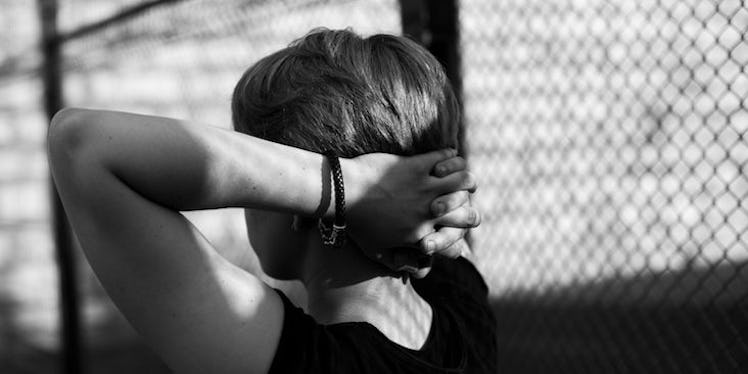
This Woman's Powerful Photo Shows You Can't Always See Someone's Mental Illness
Mental health issues can unfortunately be very difficult to talk about, largely because there continues to be such deep stigma and misunderstanding as to the vast spectrum of what it can look and feel like to contend with these struggles. I personally have dealt with complicated mental health issues in one way or another most of my life, and I work hard to manage them. It's partially because of my experiences that I find it so meaningful when others publicly -- and bravely -- work toward shifting perspectives on what mental illness might look like -- which is to say it can look like anyone. The photo of Milly Smith hours before her suicide attempt is one such example.
Smith, a mental health advocate and body-positive activist, took to Instagram to share a selfie she took of herself looking joyful and pretty just seven hours before she tried to take her own life. Smith has a large following that has developed out of her shared journey of self-acceptance and her struggles living with borderline personality disorder (BPD). The activist has repeatedly shed light on the disparity between media portrayals of mental illness and actual mental illness, as well as the unrealistic standards for women's bodies.
In the Instagram post, Smith shared,
I had no idea I'd try to take my own life in the morning, I was smiling and loved the way my hair looked hence the selfie. Having BPD (undiagnosed for so long because the NHS wouldn't listen) means that my mood can switch to suicidal in seconds over the slightest trigger. Suicidal isn't just crying, for those with a troubled life and long build ups to breaking point, it's also snap decisions made whilst your son sleeps in the same house and your loving partner kissed you goodnight hours before.
According to the National Alliance on Mental Illness (NAIM), BPD is charactered by "difficulties in regulating emotion."
Living with borderline personality disorder, according to NAIM, "leads to severe, unstable mood swings, impulsivity and instability, poor self-image, and stormy personal relationships." The organization's website explains that it's not uncommon for people with BPD to engage in "destructive behavior, such as self-harm (cutting) or suicide attempts."
Smith shared that, as a result of her emotional landscape sometimes not matching how she looks on the outside, this has caused difficulty for her even when it comes to seeking professional medical attention.
She bravely shared in one Instagram post,
'You don't look suicidal'... I remember these words coming from the Dr's mouth right after I'd just told him that I was having thoughts of suicide.
I remember in that moment my 14 year old self felt invalidation, dumb and embarrassed; something no one in that mindset should have to feel.
In an interview with Refinery29, Smith explained what it means to her to live with BPD:
Borderline personality disorder can be exhausting , terrifying and lonely. Living with borderline means I'm constantly trying to balance my emotions, I'm constantly trying to fight the lows and keep up the highs without getting too exhausted as I'll spiral.
Smith posted this recent photo -- and routinely posts these types of photos -- to illustrate that mental illness can't always be seen with the naked eye.
Furthermore, mental illness often does not appear as we imagine it, or even the way we portray it in the media. In many cases, there aren't any physical or aesthetic indicators that someone is struggling with a mental health issue, and it might not seem like there is anything externally wrong.
Although it can feel incredibly frightening and confusing, if you feel like you or someone you love is suffering with mental or emotional health, remember there is nothing to be ashamed of. Share and talk about what is really going on, and seek help from professionals. You will find one that can help you.
The more we can open up the conversation about how varied the spectrum of mental illness feels and appears, the more awareness we can cultivate -- and the faster we can vanquish the stigma once and for all.